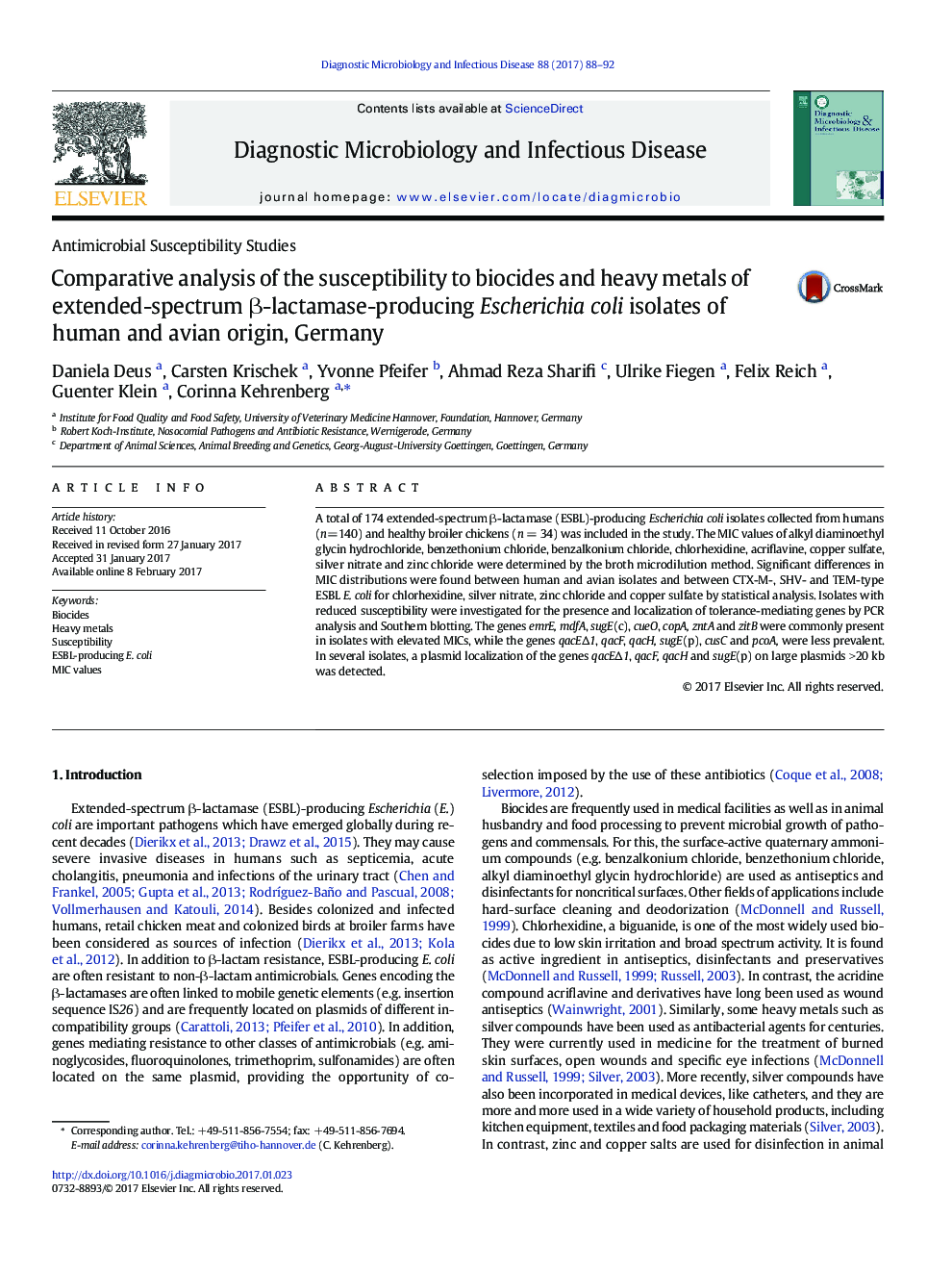| Article ID | Journal | Published Year | Pages | File Type |
|---|---|---|---|---|
| 5665943 | Diagnostic Microbiology and Infectious Disease | 2017 | 5 Pages |
A total of 174 extended-spectrum β-lactamase (ESBL)-producing Escherichia coli isolates collected from humans (n=140) and healthy broiler chickens (n = 34) was included in the study. The MIC values of alkyl diaminoethyl glycin hydrochloride, benzethonium chloride, benzalkonium chloride, chlorhexidine, acriflavine, copper sulfate, silver nitrate and zinc chloride were determined by the broth microdilution method. Significant differences in MIC distributions were found between human and avian isolates and between CTX-M-, SHV- and TEM-type ESBL E. coli for chlorhexidine, silver nitrate, zinc chloride and copper sulfate by statistical analysis. Isolates with reduced susceptibility were investigated for the presence and localization of tolerance-mediating genes by PCR analysis and Southern blotting. The genes emrE, mdfA, sugE(c), cueO, copA, zntA and zitB were commonly present in isolates with elevated MICs, while the genes qacEâ1, qacF, qacH, sugE(p), cusC and pcoA, were less prevalent. In several isolates, a plasmid localization of the genes qacEâ1, qacF, qacH and sugE(p) on large plasmids >20 kb was detected.
